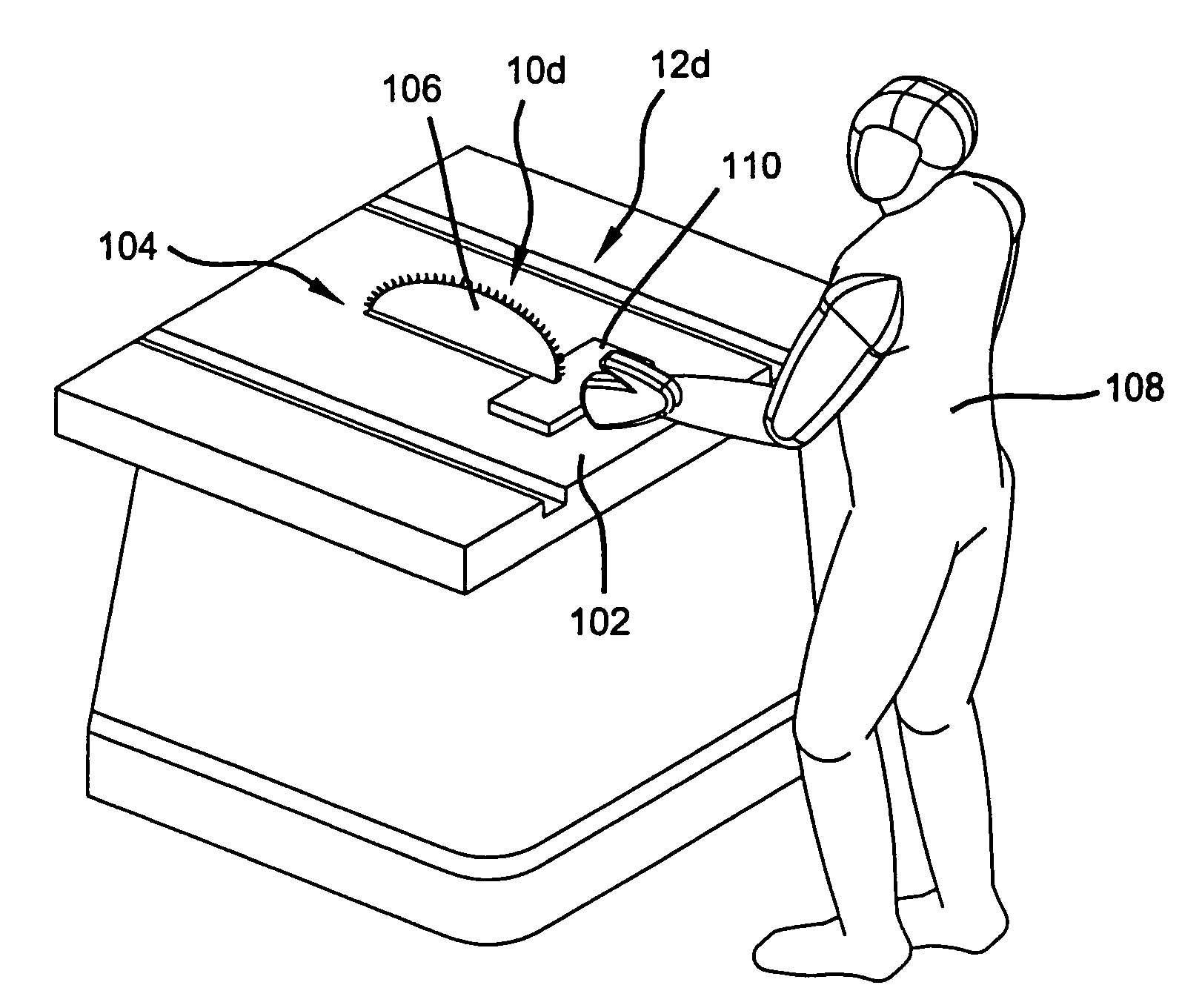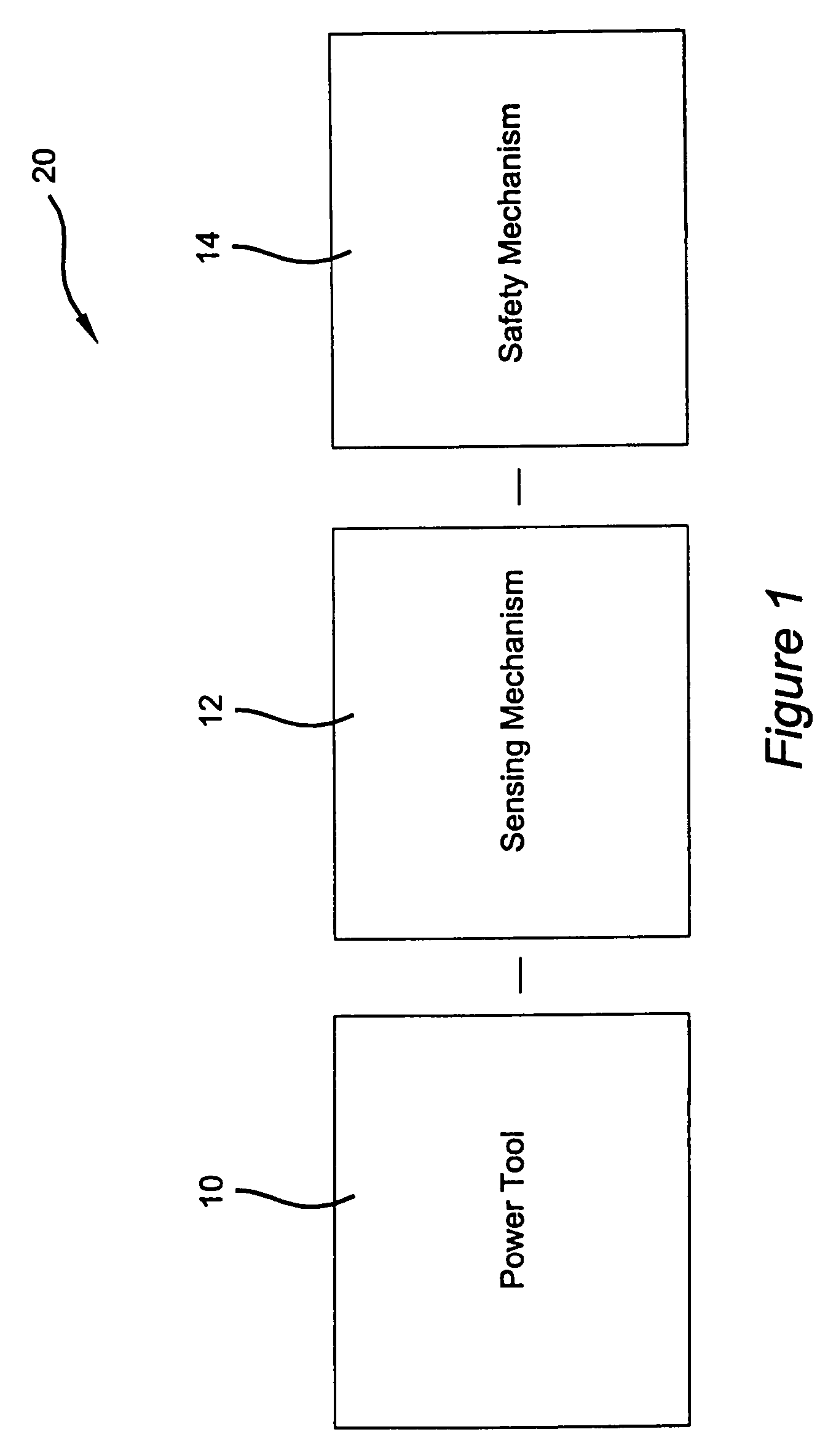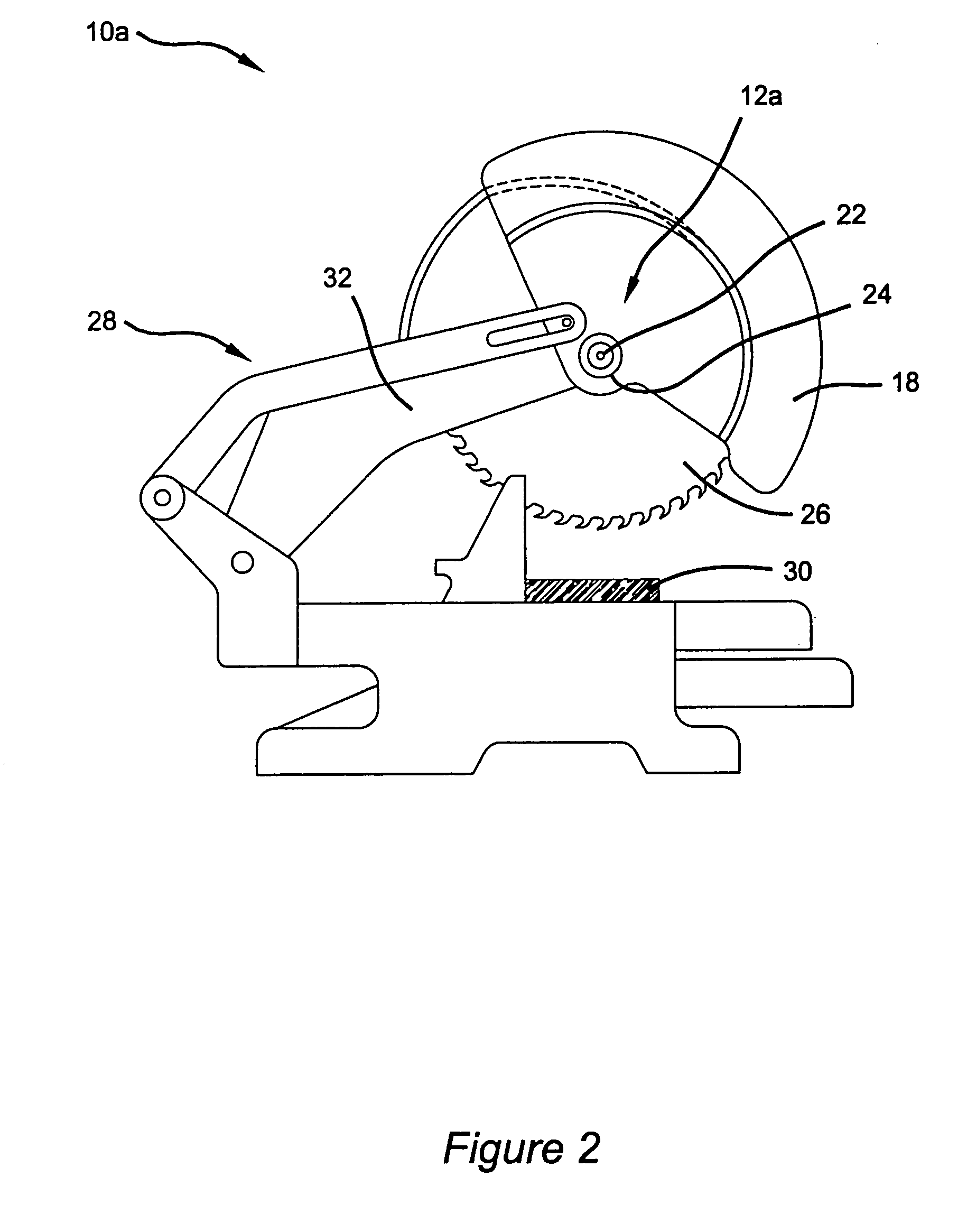Power tool safety mechanisms
a safety mechanism and power tool technology, applied in the direction of metal sawing accessories, instruments, slip couplings, etc., can solve the problem that the trigger mechanism may cut power to the active portion of the tool
- Summary
- Abstract
- Description
- Claims
- Application Information
AI Technical Summary
Benefits of technology
Problems solved by technology
Method used
Image
Examples
second embodiment
[0150]With reference to FIG. 3 a power tool 10b employing a sensing mechanism 12b according to the present invention is shown. The exemplary power tool embodied herein is a miter saw, however it is appreciated that the safety system of the present invention may be adapted for use with a variety of power tools. Miter saw 10b generally comprises a base portion 40, an angularly movable table assembly 42, and an angularly movable housing assembly 44 having a pivotally attached drive assembly 46. The drive assembly 46 is generally comprised of an electrical motor 48 drivingly coupled by way of an extension arm 50 to saw blade 52. Positioned at the distal end of the arm 50 is saw blade 52 and a handle portion 54 for controlling articulation of the saw blade 52 to engage a workpiece. The base portion 40 of the miter saw 10b includes a fence portion 56 for positioning a workpiece relative to the saw blade 52. The electrical motor 48 of the power tool 10b is activated by a trigger mechanism ...
first embodiment
[0183]Contrary to the first embodiment, the following is a description of an alternate sensing mechanism 12e hereinafter referred to as proximity sensing. Whereas the previous circuit triggered on the lack of a signal, the following will trigger on the presence of a signal. FIG. 15 illustrates a known capacitive sensing system 160. In system 160 a transmitter 162 is connected to the handle or trigger portion of the tool 164 and broadcasts a signal. The signal is capacitively coupled to the operator 170. The receiver 172 is connected to the active portion of the tool 174. When the operator 170 is holding the tool correctly, the signal is transmitted through the person 170 to the receiver 172. As the operator 170 approaches the active portion of the tool 174, the signal intensity on the receiver 172 increases until some predetermined level is reached. At that point a predetermined action is performed, such as braking of motor / blade or other safety mechanism 14 disclosed herein to prev...
third embodiment
[0371]a brake is shown in FIG. 94. The brake 1750 includes a wedge or panel brake 1752 adapted to engage the saw blade 1650. Upon activation of the brake 1750, push arm 1722 forces wedge 1752 into blade 1650. As wedge 1752 engages the saw blade 1650, the wedge 1752 engages the teeth of blade 1650. The wedge shape of wedge 1752 causes it to be drawn into further engagement with the saw blade 1650, until the saw blade 1650 is stopped.
PUM
 Login to View More
Login to View More Abstract
Description
Claims
Application Information
 Login to View More
Login to View More - R&D
- Intellectual Property
- Life Sciences
- Materials
- Tech Scout
- Unparalleled Data Quality
- Higher Quality Content
- 60% Fewer Hallucinations
Browse by: Latest US Patents, China's latest patents, Technical Efficacy Thesaurus, Application Domain, Technology Topic, Popular Technical Reports.
© 2025 PatSnap. All rights reserved.Legal|Privacy policy|Modern Slavery Act Transparency Statement|Sitemap|About US| Contact US: help@patsnap.com



